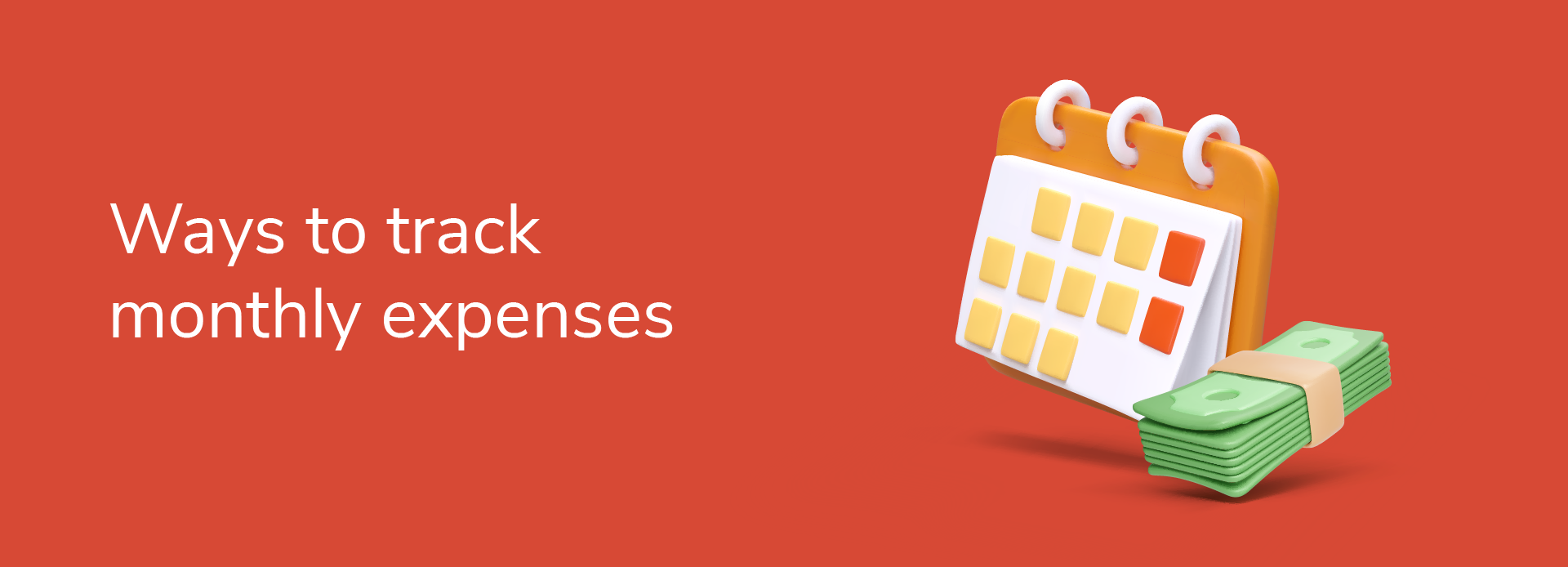
Taking Control: 6 Effective Ways to Track Your Monthly Expenses
20 June 2024 | By INDIE
Do you struggle with sticking to your financial budget every month, even with a steady flow of income? Well, you're not alone. Most people do not understand where their money goes and subsequently find themselves stuck in a budget crunch. The first step to financial empowerment is gaining control of your spending – and that starts with tracking your monthly expenses.
Let’s look at 6 effective methods for monthly expense tracking to turn it into a life-changing habit!
1. Leverage Existing Tools: Bank Statements and Online Banking Platforms
Most banks and credit card companies offer a wealth of information readily available. Utilize your monthly statements or online banking platform as a free monthly expense tracker. These resources provide a detailed record of transactions, categorized by merchant type in many cases.
Pros:
● Free and readily available – no additional setup required.
● Provides a historical record of spending for trend analysis.
● Categorization can simplify expense analysis (availability may vary).
Cons:
● May require manual categorization for some transactions
● Can be cumbersome to analyze spending across different accounts
● Limited budgeting features or goal-setting functionality
2. Embrace Technology: Spending Tracker Apps
Technology has revolutionized expense tracking. Spending tracker apps are readily available for download on your smartphone or tablet. These user-friendly apps allow you to seamlessly track and categorize expenses on the go. Many offer additional features such as:
● Secure linking to your bank accounts
● Budgeting tools and goal-setting functionality
● Data visualization features like charts and graphs
Pros:
● Convenient, on-the-go expense tracking
● Automated transaction import reduces manual data entry
● Budgeting and goal-setting features
● Data visualization simplifies trend analysis
Cons:
● Some apps require paid subscriptions
● Security concerns
3. Utilize Spreadsheets: A Customizable Approach
For those comfortable with technology, spreadsheets offer a customizable monthly expense tracker. Platforms like Google Sheets or Microsoft Excel are readily available and offer powerful features. You can create a personalized budget template that allows you to categorize expenses, set goals, and even generate automated charts for visual analysis.
Pros:
● Allows for complex calculations and data analysis.
● Can integrate with online banking for automatic transaction import
Cons:
● Requires some technical knowledge
● Less user-friendly than dedicated expense-tracking apps.
● May require ongoing maintenance of the spreadsheet template.
4. Explore Personal Expense Tracker Apps
For individuals with complex financial needs, personal expense tracker apps offer a robust solution. These programs offer advanced functionalities beyond basic expense tracking. Whether you're a freelancer tracking business expenses, a landlord looking for a rental income and expenses tracker, or a small business owner monitoring cash flow, there's an app for you.
Pros:
● Comprehensive suite of tools for advanced financial management.
● Automated import of data using app integration.
● Powerful budgeting and forecasting functionalities.
Cons:
● Typically requires a paid subscription.
● May have a steeper learning curve compared to simpler tools.
5. Breakdown Your Budget
Category |
Allocation |
Description |
Needs |
50% |
Essential living costs like rent, utilities, groceries, and transportation. |
Wants |
30% |
Discretionary spending on entertainment, dining out, and hobbies. |
Savings & Debt Repayment |
20% |
Funds are allocated for emergencies, long-term goals, or debt repayment. |
This rule motivates you to save at least 20% of your post-tax income in strategic investments such as Mutual Funds, Recurring Deposits, and Fixed Deposits. You can explore the INDIE app for such investments, where you can decide on your monthly installments.
6. Regular Financial Check-Ins:
Last but not least, make it a habit to conduct regular financial check-ins to assess your progress and make necessary adjustments. Schedule a monthly or quarterly review with the help of an expense tracker where you analyze your spending patterns, evaluate your budget goals, and identify areas for improvement. MoneyMate on INDIE by IndusInd Bank is one such tool that is designed with ‘you’ in mind. It can help you make informed decisions, cultivate healthy financial habits, and work toward achieving your long-term goals.
Also Read: Expense Tracker
Disclaimer: The information provided in this article is generic and for informational purposes only. It is not a substitute for specific advice in your circumstances. Hence, you are advised to consult your financial advisor before making any financial decision. IndusInd Bank Limited (IBL) does not influence the views of the author in any way. IBL and the author shall not be responsible for any direct/indirect loss or liability incurred by the reader for making any financial decisions based on the contents and information.




